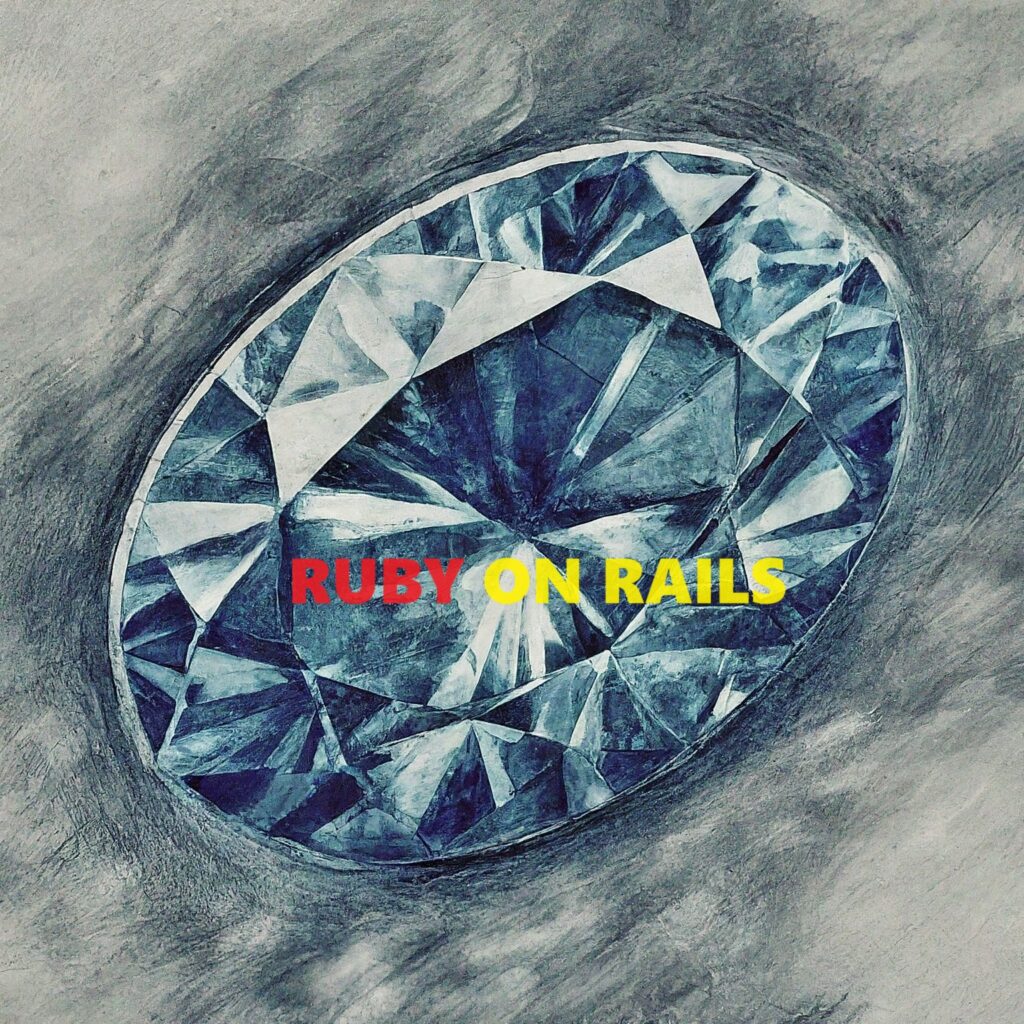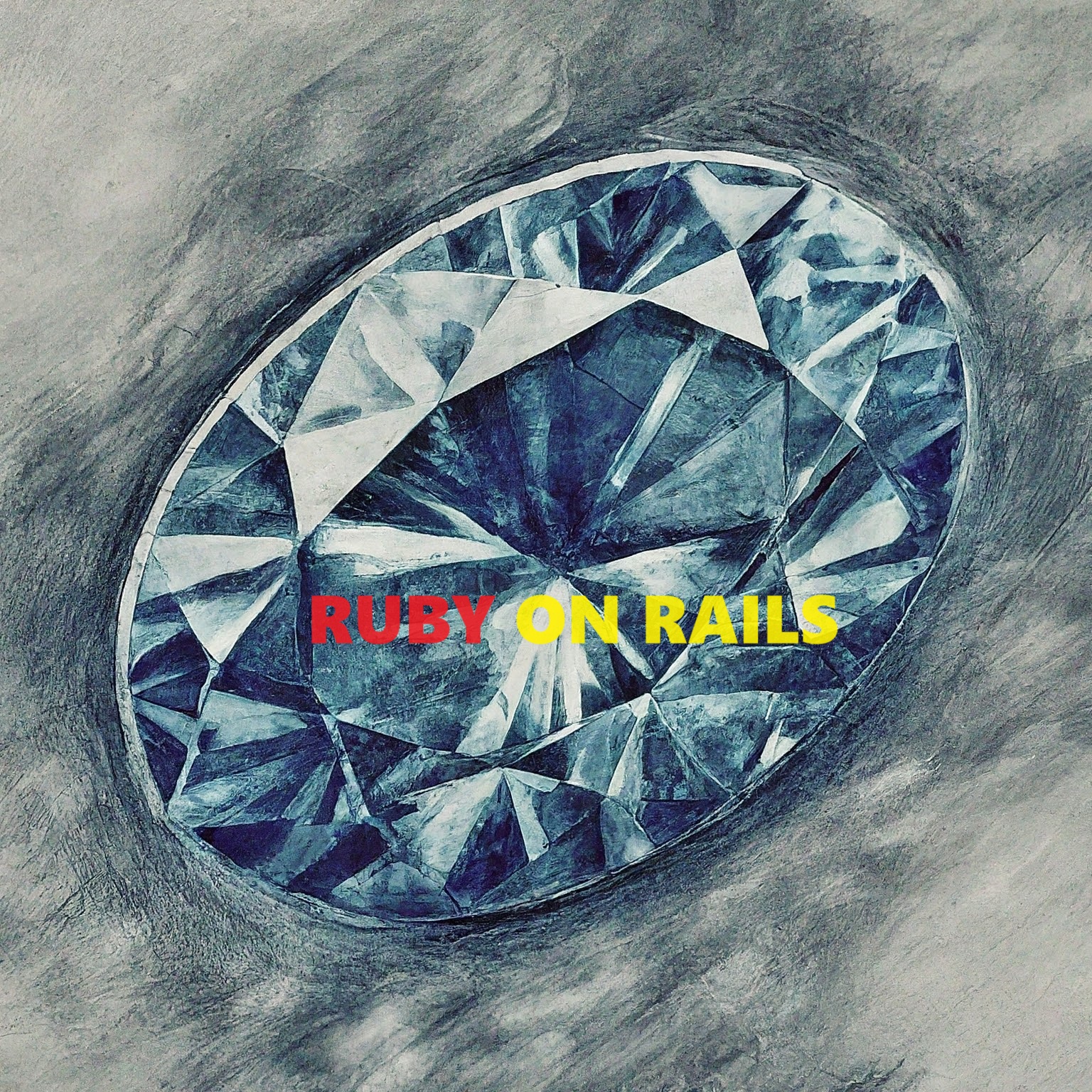Ruby on Rails, often simply referred to as Rails, is a powerful and popular web application framework written in the Ruby programming language. Since its inception in 2004 by David Heinemeier Hansson, Rails has revolutionized web development by introducing a new level of simplicity and efficiency. The framework is designed to make programming web applications easier by making assumptions about what every developer needs to get started. This approach has resonated with developers worldwide, leading to a vibrant community and a rich ecosystem of tools and libraries.
Contents
Navigating the Future of Ruby on Rails: Innovations and Trends to Watch by 2025.
Architecture and Core Principles.
Key Features of Ruby on Rails.
Advantages of Using Ruby on Rails.
Potential Drawbacks of Ruby on Rails.
The Future of Ruby on Rails: Navigating Towards 2025 and Beyond.
1. Enhanced Performance and Scalability.
2. Better Support for Modern Front-end Technologies.
3. Enhanced Developer Experience.
4. Expansion of the Rails Ecosystem..
5. Greater Emphasis on Security.
6. Cloud-Native and Serverless Capabilities.
7. Artificial Intelligence and Machine Learning.
What’s Next for Ruby on Rails?.
Introduction
Rails follows the convention over configuration (CoC) and don’t repeat yourself (DRY) principles, which significantly reduce the amount of code developers need to write while promoting code readability and maintainability. These principles, along with Rails’ built-in libraries and generators, allow developers to build high-quality web applications rapidly. The framework’s emphasis on RESTful application design and its deep integration with front-end technologies like HTML, CSS, and JavaScript further streamline the development process.
This article delves into the core aspects of Ruby on Rails, exploring its history, architecture, and key features. We will also examine the advantages and potential drawbacks of using Rails, and provide insights into its ecosystem and community. Whether you are a seasoned developer or a newcomer to web development, understanding Ruby on Rails can enhance your ability to create robust, scalable web applications efficiently.

History of Ruby on Rails
Ruby on Rails was created in 2004 by David Heinemeier Hansson, a Danish programmer, during his work on the project management tool Basecamp. Hansson extracted Ruby on Rails from the Basecamp project and released it as an open-source framework. His goal was to provide a streamlined, productive way to develop web applications, inspired by the elegance and simplicity of the Ruby programming language.
Rails quickly gained popularity due to its developer-friendly features and philosophies. By 2005, the first official version (1.0) was released, marking the beginning of a new era in web development. The framework continued to evolve rapidly, incorporating modern web standards and practices. Each major release brought enhancements and new functionalities, solidifying Rails’ reputation as a robust and progressive framework.
Architecture and Core Principles
Ruby on Rails is built on the Model-View-Controller (MVC) architectural pattern, which separates an application into three interconnected components:
- Model: Represents the data and the business logic of the application. It encapsulates the application’s data and defines how data can be created, read, updated, and deleted.
- View: Handles the presentation layer of the application. Views are responsible for generating the HTML, CSS, and JavaScript that make up the user interface.
- Controller: Manages the application’s logic and acts as an intermediary between the Model and the View. Controllers process incoming requests, interact with the model to retrieve or manipulate data, and render the appropriate view.
The MVC architecture promotes organized and modular code, making it easier to manage and scale applications. Rails’ adherence to this pattern ensures a clear separation of concerns, which enhances both development speed and code maintainability.
Key Features of Ruby on Rails
Ruby on Rails offers a wide array of features designed to facilitate rapid and efficient web development. Some of the most notable features include:
1. Convention over Configuration (CoC)
Rails follows the Convention over Configuration principle, which means that the framework makes assumptions about how developers typically want to structure their applications. By adhering to these conventions, developers can avoid writing boilerplate code and focus on the unique aspects of their applications. This approach significantly reduces the amount of configuration required, leading to faster development cycles.
2. Don’t Repeat Yourself (DRY)
The DRY principle emphasizes reducing code duplication by promoting the reuse of code throughout the application. Rails encourages the use of reusable components, helpers, and partials, allowing developers to write cleaner and more maintainable code. This principle helps to minimize errors and makes it easier to update and refactor code.
3. Active Record
Active Record is the Object-Relational Mapping (ORM) layer in Rails, which facilitates database interactions. It allows developers to interact with the database using Ruby objects, eliminating the need to write SQL queries manually. Active Record provides a simple and intuitive API for performing common database operations, such as creating, reading, updating, and deleting records.
4. Scaffolding
Rails includes a powerful scaffolding feature that automatically generates the necessary code for basic CRUD (Create, Read, Update, Delete) operations. Scaffolding can quickly create a functional prototype of an application, complete with views, controllers, and models. This feature is particularly useful during the early stages of development, as it allows developers to focus on refining the application’s unique features.
5. Routing
Rails’ routing system maps incoming HTTP requests to the appropriate controller actions. The routing DSL (Domain-Specific Language) provides a clear and concise way to define routes, making it easy to manage the application’s URL structure. Rails supports both resourceful routing, which follows RESTful conventions, and custom routing for more complex scenarios.
6. RESTful Architecture
Rails embraces the REST (Representational State Transfer) architectural style, which promotes a standardized way of designing web services. By following RESTful conventions, Rails applications can easily interact with other services and APIs. The framework’s built-in support for RESTful routes and controllers simplifies the development of RESTful web applications.
7. Asset Pipeline
The asset pipeline is a feature in Rails that manages the assets of an application, such as JavaScript, CSS, and images. It allows developers to concatenate and minify assets, reducing the number of HTTP requests and improving performance. The asset pipeline also supports pre-processing tools like Sass and CoffeeScript, enabling the use of advanced front-end technologies.
8. Testing Framework
Rails comes with a robust testing framework that encourages a test-driven development (TDD) approach. It includes built-in support for unit tests, functional tests, and integration tests, making it easy to write and run tests for the application. The framework also integrates with popular testing libraries like RSpec and Capybara, providing additional tools for writing comprehensive tests.
Advantages of Using Ruby on Rails
Ruby on Rails offers numerous advantages that make it a popular choice among web developers. Some of the key benefits include:
1. Rapid Development
Rails’ emphasis on convention over configuration, along with its powerful generators and scaffolding features, allows developers to build applications quickly. The framework’s intuitive syntax and extensive libraries further enhance productivity, enabling developers to focus on delivering features rather than dealing with boilerplate code.
2. High-Quality Code
Rails promotes best practices such as the DRY principle and the MVC architecture, which lead to clean, maintainable code. The framework’s emphasis on testing and its integration with testing libraries ensure that developers can write reliable and robust applications. These factors contribute to higher code quality and easier long-term maintenance.
3. Active Community
Rails has a vibrant and active community of developers who contribute to its development and provide support through forums, blogs, and online resources. The community-driven nature of Rails ensures that the framework remains up-to-date with the latest trends and technologies in web development. Developers can also leverage a wealth of open-source libraries and plugins created by the community to extend the functionality of their applications.
4. Scalability
Rails is designed to handle applications of varying sizes, from small startups to large-scale enterprise systems. The framework’s modular architecture and support for modern web standards make it easy to scale applications as they grow. Rails also integrates well with cloud services and containerization technologies, facilitating the deployment and scaling of applications.
5. Security
Security is a top priority in Rails, and the framework includes several built-in mechanisms to protect applications from common vulnerabilities. Rails automatically handles tasks such as input validation, CSRF (Cross-Site Request Forgery) protection, and SQL injection prevention. The framework also encourages secure coding practices and provides tools for managing authentication and authorization.
Potential Drawbacks of Ruby on Rails
While Ruby on Rails offers many advantages, it is not without its challenges and potential drawbacks. Some of the common concerns include:
1. Performance
Rails’ emphasis on developer productivity can sometimes come at the expense of performance. The framework’s abstractions and built-in features can introduce overhead, making it less performant compared to more lightweight frameworks. However, many performance issues can be mitigated through optimization techniques and by leveraging caching and other performance-enhancing tools.
2. Learning Curve
For developers who are new to Ruby or web development in general, Rails’ conventions and abstractions can present a steep learning curve. While the framework’s documentation and community resources are extensive, mastering Rails requires a solid understanding of its principles and architecture. However, once developers become familiar with Rails, they often find it to be a highly productive and enjoyable framework to work with.

3. Flexibility
Rails’ convention-over-configuration approach can sometimes limit flexibility, especially for developers who prefer a more customizable framework. While Rails provides mechanisms for overriding conventions and customizing behavior, doing so can complicate the codebase and reduce some of the framework’s productivity benefits. Developers who require a high degree of flexibility may need to weigh the trade-offs between convention and customization.
The Rails Ecosystem
The Ruby on Rails ecosystem is rich with tools, libraries, and resources that enhance the development experience. Some of the key components of the Rails ecosystem include:
1. Gems
Gems are Ruby’s way of packaging and distributing libraries and applications. The Rails ecosystem includes a vast collection of gems that provide additional functionality and extend the capabilities of the framework. Popular gems like Devise (for authentication), Pundit (for authorization), and CarrierWave (for file uploads) are widely used in Rails applications.
2. Bundler
Bundler is a dependency management tool for Ruby applications. It allows developers to specify the gems their application depends on and ensures that the correct versions are installed. Bundler simplifies the management of dependencies and helps to maintain a consistent and reproducible development environment.
3. Rails Engines
Rails engines are miniature applications that can be embedded within a larger Rails application. They allow developers to encapsulate functionality and share it across multiple projects. Engines are particularly useful for building modular and reusable components, such as content management systems or e-commerce platforms.
4. Deployment Tools
Rails integrates with various deployment tools and platforms, making it easy to deploy and manage applications. Tools like Capistrano and Docker streamline the deployment process, while platforms like Heroku and AWS provide scalable hosting solutions. Rails’ compatibility with modern DevOps practices ensures that applications can be deployed and maintained efficiently.
5. Documentation and Learning Resources
The Rails community provides extensive documentation and learning resources to help developers get started and advance their skills. The official Rails Guides and API documentation offer comprehensive information on using the framework, while online tutorials, courses, and books provide additional learning opportunities. The community’s commitment to sharing knowledge and best practices makes Rails an accessible and supportive framework for developers of all levels.
The Future of Ruby on Rails: Navigating Towards 2025 and Beyond
As we look ahead to 2025, Ruby on Rails is poised to continue its evolution as a premier web development framework. With a strong foundation built on its core principles of convention over configuration and the DRY (Don’t Repeat Yourself) approach, Rails is well-positioned to adapt to the changing landscape of web development. Here’s a look at the potential direction Ruby on Rails could take in the coming years and what might be next for this influential framework.

1. Enhanced Performance and Scalability
One of the consistent criticisms of Ruby on Rails has been its performance relative to other frameworks, particularly those built in languages like Go or Elixir. By 2025, we can expect the Rails core team and the broader community to place a strong emphasis on performance enhancements. This could involve:
- Optimizing the Rails Framework: Continued efforts to refine and optimize the framework’s core components for better speed and reduced memory usage.
- Integration with WebAssembly: Leveraging WebAssembly (Wasm) to execute performance-critical code. This could help Rails applications achieve near-native performance levels.
- Concurrency Improvements: Enhancing the concurrency model to better support high-traffic applications, possibly by integrating more deeply with concurrent Ruby implementations like Ractor.
2. Better Support for Modern Front-end Technologies
The separation of back-end and front-end development has grown more pronounced with the rise of front-end frameworks like React, Vue.js, and Angular. Ruby on Rails has historically provided strong support for front-end development through tools like the asset pipeline. Moving forward, we can expect:
- Deeper Integration with Front-end Frameworks: Improved tools and libraries to facilitate seamless integration with modern front-end frameworks, allowing developers to leverage the best of both worlds.
- Hotwire and Stimulus: Continued development and adoption of Hotwire and Stimulus, the Rails-native solutions for building fast, dynamic user interfaces with minimal JavaScript.
3. Enhanced Developer Experience
Ruby on Rails has always prioritized developer happiness and productivity. By 2025, we can expect Rails to continue refining this aspect with:
- Improved CLI Tools: More powerful and user-friendly command-line tools to speed up common development tasks.
- Better Documentation and Learning Resources: Enhanced official documentation, more interactive tutorials, and increased support for new developers entering the Rails ecosystem.
4. Expansion of the Rails Ecosystem
The Rails ecosystem is already rich with gems and libraries, and this is likely to expand further. Expect to see:
- New and Improved Gems: Continued growth in the number and quality of Ruby gems, providing solutions for emerging web development challenges.
- Microservices and API Enhancements: Improved support for building microservices architectures and RESTful APIs, enabling Rails applications to play well in a distributed systems environment.
5. Greater Emphasis on Security
Security will remain a top priority as cyber threats become increasingly sophisticated. Rails is expected to bolster its security features with:
- Automated Security Audits: Tools for automated security checks and audits integrated into the Rails development process.
- Enhanced Default Security Configurations: More secure default configurations and best practices baked into the framework to help developers build secure applications out of the box.
6. Cloud-Native and Serverless Capabilities
With the growing adoption of cloud-native and serverless architectures, Rails is likely to adapt to these paradigms by:
- Serverless Rails: Improved support and tooling for deploying Rails applications in a serverless environment, such as AWS Lambda or Google Cloud Functions.
- Cloud Integration: Enhanced integrations with cloud services, making it easier to deploy, manage, and scale Rails applications on platforms like AWS, Azure, and Google Cloud.
7. Artificial Intelligence and Machine Learning
As AI and ML become more integral to web applications, Rails is expected to integrate more closely with AI and ML tools and frameworks:
- Built-in AI/ML Support: Native support for integrating machine learning models and AI services, making it easier for developers to add intelligent features to their applications.
- AI-Powered Development Tools: Tools that use AI to assist developers in writing, testing, and debugging code.
What’s Next for Ruby on Rails?
Looking beyond 2025, the Rails community and its leaders will continue to innovate and respond to the needs of developers and the tech industry. Key areas of focus might include:
1. Continued Evolution of Hotwire and Turbo
Hotwire (HTML Over The Wire) and Turbo are modern approaches developed within the Rails ecosystem that minimize the amount of custom JavaScript needed to build dynamic web applications. We can expect:
- Broader Adoption and Maturity: As more developers embrace Hotwire and Turbo, these tools will become more robust and feature-rich.
- Improved Developer Experience: Enhancements that make it even easier to build responsive, real-time applications without sacrificing the simplicity and productivity Rails is known for.
2. AI and Machine Learning Integration
The integration of AI and machine learning capabilities into web applications is a growing trend
. Rails could see new libraries and tools that make it easier to integrate AI/ML models into applications, bringing advanced capabilities to a wider range of developers.
- Built-in AI/ML APIs: Rails could include built-in support for popular AI and ML frameworks such as TensorFlow, PyTorch, and OpenAI, allowing developers to seamlessly integrate intelligent features like recommendation engines, natural language processing, and predictive analytics.
- Enhanced Data Processing Capabilities: Rails might offer improved tools for handling large datasets and performing data preprocessing, essential for training and deploying machine learning models.
3. Greater Adoption of Microservices Architecture
As the trend towards microservices architecture continues, Rails could evolve to better support this style of development:
- Rails as a Microservices Framework: Tools and conventions specifically designed for building and managing microservices within a Rails ecosystem, making it easier to create modular, scalable applications.
- Service Discovery and Communication: Improved support for service discovery, inter-service communication, and coordination, possibly integrating with tools like Kubernetes and service meshes.

4. Enhanced DevOps and CI/CD Integration
DevOps practices are crucial for modern web development, and Rails is expected to integrate more deeply with continuous integration and continuous deployment (CI/CD) tools:
- Out-of-the-box CI/CD Solutions: Simplified setup for CI/CD pipelines, potentially with native support for popular CI/CD services like GitHub Actions, CircleCI, and Jenkins.
- Infrastructure as Code (IaC): Improved tools for managing infrastructure using code, making it easier to deploy and scale Rails applications in cloud environments.
5. Focus on Sustainability and Eco-Friendly Development
As the tech industry becomes more aware of its environmental impact, Rails could lead the charge in promoting sustainable development practices:
- Energy-efficient Coding Practices: Guidelines and tools to help developers write code that consumes less energy and resources.
- Green Hosting Solutions: Integrations with eco-friendly hosting providers and tools to measure and reduce the carbon footprint of Rails applications.
6. Expanded Accessibility Features
Accessibility is a growing concern in web development, and Rails could introduce more robust support for creating accessible applications:
- Built-in Accessibility Audits: Tools that automatically check for and suggest fixes to common accessibility issues during development.
- Improved Support for ARIA: Better integration with Accessible Rich Internet Applications (ARIA) standards, helping developers create applications that are usable by everyone, including those with disabilities.
Conclusion
Ruby on Rails has established itself as a powerful and productive web application framework, thanks to its emphasis on convention over configuration, the DRY principle, and the MVC architecture. Its extensive features, active community, and rich ecosystem make it a popular choice for developers looking to build robust and scalable web applications quickly.
While Rails has some potential drawbacks, such as performance concerns and a learning curve for newcomers, its advantages often outweigh these challenges. The framework’s ability to promote high-quality code, its scalability, and its focus on security make it a reliable choice for projects of all sizes.
As web development continues to evolve, Ruby on Rails remains a relevant and valuable tool for developers. Its principles and philosophies continue to influence modern web development practices, and its community-driven nature ensures that it will adapt to meet the needs of future developers. Whether you are building a small startup or a large enterprise application, Ruby on Rails offers the tools and support needed to succeed in the dynamic world of web development.
We are already past 5 months of 2024, now, as we look towards 2025 and beyond, Ruby on Rails is expected to continue evolving in response to the ever-changing landscape of web development. By enhancing performance, integrating modern front-end and AI technologies, and embracing microservices and cloud-native architectures, Rails will remain a powerful and relevant framework for building robust web applications. The framework’s commitment to developer productivity, security, and the promotion of best practices ensures that it will continue to be a preferred choice for developers worldwide.
The Rails community, driven by innovation and a collaborative spirit, will play a crucial role in shaping the future of the framework. With ongoing contributions from developers, thought leaders, and organizations, Ruby on Rails is well-positioned to navigate the challenges and opportunities of the next decade, maintaining its reputation as a leading web development framework. Whether you are a seasoned Rails developer or new to the framework, the future of Ruby on Rails promises exciting advancements and continued support for creating high-quality, scalable web applications.





